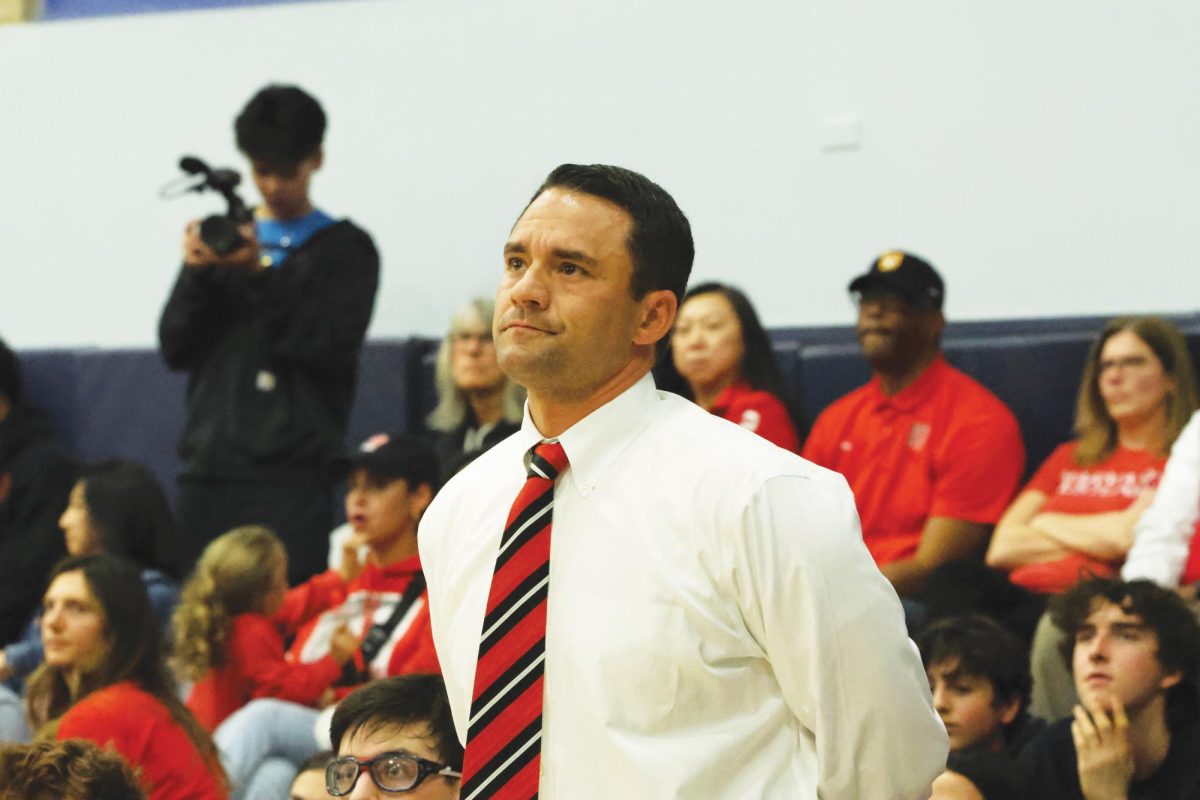As the Mariachi band performed, she said she felt embarrassed walking through the crowd. However, as Anna Martinez-Yang ’20 approached the center of the room and saw those around her, she remembered the purpose of her quinceñera: to embrace her Mexican identity.
“At first, I felt ashamed with an entourage of uniformed men singing and playing instruments, but as I walked down, I saw how much people enjoyed the genuine life that comes with Mexican culture that instantly uplifted the room,” Martinez-Yang said.
Beyond her quinceñera and Mexican heritage, Martinez-Yang has also found a way to cherish her Korean background. As a volunteer of the Korean-American Parents Association, Martinez-Yang has learned Korean traditional dance for a Korean arts performance. Through this experience, she was able to combine her culture with art.
“Korean traditional dance has helped me learn the Korean standards of beauty,” Martinez-Yang said. “We had to have straight backs at all times, and there was only one way to hold the fan. It showed me the strict side of Korean culture. However, I also got to see the product, which was a beautiful dance.”
Martinez-Yang also said that she believed that the performance of Korean traditional dance helped her bond with other students over their shared culture.
“A few others girls and I proceeded to meet and practice every weekend for about a month and a half,” Martinez-Yang said. “Together, we helped each other learn about proper postures and the routine. Together, I think we all were able to bond together and experience a part of the culture that we have never experienced.”
Like Martinez-Yang, Anita Anand ’19 also uses dance to connect with her heritage, but through a different form. Instead, she is a classical Indian dancer, learning to master the art form called Bharatanatyam.
“We combine facial expressions, abhinaya and pure dance technique, nrtta, to depict stories from Hindu mythology,” said Anand. “We are accompanied by percussion, mridangam drums, strings, veena, and singing in one of the many Indian languages such as Hindi Sanskrit or Tamil.”
Anand also said that beyond Bharatanatyam, dance in general is a very effective way for anyone and everyone to express their background. Often times, she said, cultural dance forms are centered around heritage, religion, or cultural traditions.
“Bharatanatyam dance depicts stories from ancient religious texts or shows the daily life of a rural woman in India,” Anand said. “Because of this, dance class is the place where I feel most connected to my heritage. I have learned religious texts, Indian traditions, manners and culture, and I have made many friends of similar races and heritage, and who practice the same traditions as I do.”
Henry Greenman ’20 similarly uses performance art to learn about and express his cultural roots as an African American trombone player.
“I think jazz music is a great way to get back to my cultural roots because it serves as a tool of protest,” Greenman said. “It is very similar to the role of music in the Harlem Renaissance of the early 1900’s. Playing the trombone has helped to navigate my identity.”
Additionally, students also use painting and drawing as a way to connect with their heritage or raise awareness for their own social contexts. Remi Patton ’20 uses variations of classical works, which often are produced from historically white cultures to speak out about her race and culture.
“My art definitely connects to my heritage,” Patton said. “The method I use to incorporate my culture into my art is using romantic [and] renaissance painting techniques and incorporating brown and black figures in to such compositions in order to represent people who look like me who weren’t previously represented in those types of paintings.”
Patton said that she uses classical methods of painting to connect with her heritage because it is well-known and thus variations of such art can have a larger social impact.
“I think it’s the influence and well known reputation these pieces of art have,” Patton said. “That pre-established respect that comes with those paintings allows for the altered version to carry that same sense of respect while also representing people of color and more diverse cultures than they did originally.”
Visual Arts teacher Claire Cochran ’06 said that she believes the school’s art programs encourage students to reflect on their identity and culture.
“I think Harvard-Westlake has made a concerted effort to encourage students to to connect with their heritage,” Cochran said. “Art is an incredibly effective medium to explore one’s culture.”
Cochran also said that art is inherently an effective medium for expressing one’s cultural history and identity because it requires interpretation.
“Visual language provides fertile ground to reference historical as well as contemporary elements of one’s cultural heritage,” Cochran said. “There is also an inherent coding in art – it must be deciphered, and that layer of ambiguity allows this really interesting tension between the specificity of the artist’s intention and the myriad ways a viewer will interpret the work. It’s an ideal medium through which to spark dialogue between artist and viewer. “
Student painter and makeup artist Oscar Montanez-Garay ’20 said that he brings awareness to American stereotypes towards Mexican culture in his paintings.
“My work highlights the implicit biases and stereotypes surrounding Mexicans in America,” Montanez-Garay said. “In one of my paintings, ‘Lazy Day on El Rancho’ the use of red evokes an emotional charge disrupting the scene and catching the viewer’s eye. The men in the foreground are sitting down next to scattered beer cans which plays into the stereotype of Mexican men being lazy, dominant and alcoholics.”
Montanez-Garay said he wishes to connect with and represent his culture in predominantly white institutions through his satirical paintings.
“As a Mexican who attends school with mostly white students, in the Hispanic majority city of Los Angeles, my culture is underrepresented,” Montanez-Garay said. “Therefore, my peers’ perceptions of Mexicans are misguided by the media and their limited authentic experiences with people of Mexican descent. In response, I’ve made paintings as an examination, critique, satirization, and a call to action.”





































